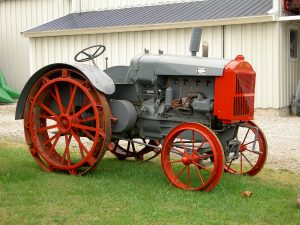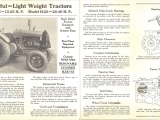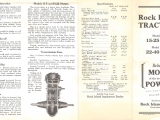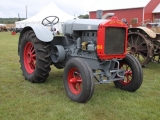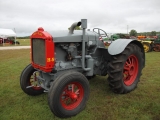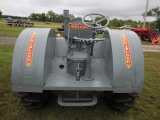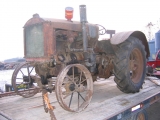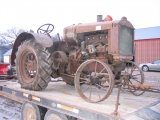The Rock Island H5 was the last in the 15-25 line for the company, replacing the G, G2, H3 and H4 and was the brother design of the H22 22-40. Despite the H designation, the H5 was as large a leap from the H3/4 in many ways as the G to G2 had been. With the H5 The Waukesha VI engine line was introduced to the Rock Island line, with the standard being the VIL although some tractors in the line received the VIK engine instead. The H5 was also never Nebraska tested, so no solid test data exits on hp. The Hart Parr 18-28 is a very close comparison, and made 23-30 on the Nebraska test in 1930. In 1938 the updated Oliver 80 test produced 28 hp on the drawbar and 39 HP on the belt, so although direct comparisons are hard to draw due to differences in design, transmission and weight, there was plenty of potential in this engine well in excess of the 15-25 rating it was given and likely it is the most over powered of the Rock Island line compared to its official rating.
Parts for the H5 are a lot more obtainable then some others due to it sharing the same engine with the Huber L and very close to the Hart-Parr 18-28/80. The manifold from the 80 can be used as a replacement for an H5 and is available as a reproduction part. The biggest weak point on the H5 is probably the water pump as most seem to leak, and at least some of the rear end components were under built for its power.
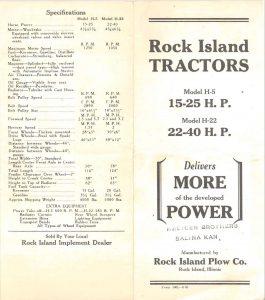 Unlike the earlier H’s, the H5 is very distinguishable from other Rock Islands. The overhead single block Waukesha engine is readily apparent and having both intake and exhaust on the operators left is a dead giveaway. Another visual clue is the front of the fenders is rounded off only on the H5 and H22. Unlike the No 1, the H5 was a full production tractor, although production was highly limited. According to my research, it appears 54 VIL’s and 2 VIK’s were shipped and production was confined to the last half of 1935 and perhaps the first few weeks of 1936. A serial number on a reproduction tag shows 137, but I believe this is in error. Certainly today there are very few examples of H5’s remaining, I have confirmation of 7 confirmed H5’s and one additional probable survivor.
Unlike the earlier H’s, the H5 is very distinguishable from other Rock Islands. The overhead single block Waukesha engine is readily apparent and having both intake and exhaust on the operators left is a dead giveaway. Another visual clue is the front of the fenders is rounded off only on the H5 and H22. Unlike the No 1, the H5 was a full production tractor, although production was highly limited. According to my research, it appears 54 VIL’s and 2 VIK’s were shipped and production was confined to the last half of 1935 and perhaps the first few weeks of 1936. A serial number on a reproduction tag shows 137, but I believe this is in error. Certainly today there are very few examples of H5’s remaining, I have confirmation of 7 confirmed H5’s and one additional probable survivor.
Literature and advertising is sparse for the H5 and H22, and I would greatly appreciate the opportunity to examine any or add digital copies on here.
We own H5 35034, which when we bought it had not been restored to original configuration. Its main issue was a bad water pump, one thing led to another and we redid the entire tractor in spring/summer of 2014, restoration photos can be seen HERE.
